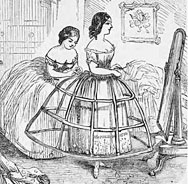Hermetical
Patent/design registration not found
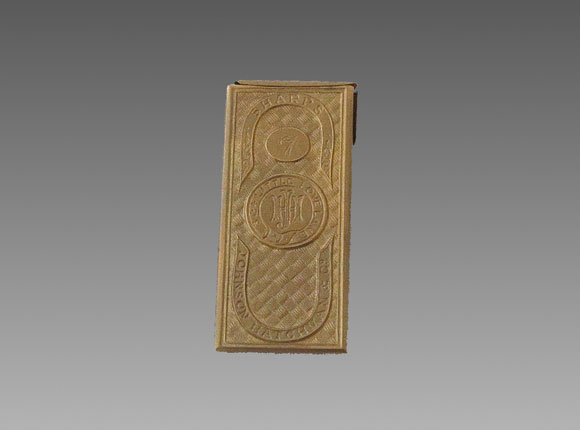
Needle Case (photographs courtesy of Clarice Birch)
Design Details
Needle Case Type: |
Flat-Names |
Patent/Registered to: |
Unknown |
Patent/Design Representation #: |
Unknown |
Patent/Design Registration Date: |
Unknown |
Location of Patent/Design Registration: |
Unknown |
Reference #: |
Unknown |
Dimensions: |
4.5 x 2 |
Material: |
Brass |
Name Variations: |
Johnson-Hatchman & Co - London |
Other Variations: |
None |
Additional Photographs
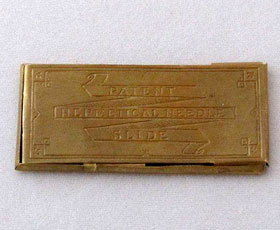
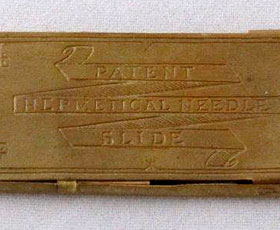
Back and name detail
Johnson Hatchman & Co
Frederick Johnson and William Hatchman were partners in the Victorian firm Johnson Hatchman & Co. They had offices, workshops or depots
on Little Love Lane and also at 73-74 Wood Street in London. The company was listed in business directories as a crinoline skirt manufacturer,
haberdasher and warehouseman. They were involved with fabrics and lacemaking as well having registered four lace and two woven fabric designs
between 1868-1870. Later, in the 1870s, they patented several improvements to umbrellas in both Britain and the USA including the one pictured
below.
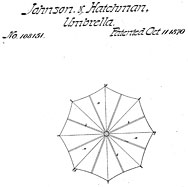
Victorian Lace
Lace has its originals in 15th century Europe. At first it was only available to the clergy and nobility because it was handmade and
therefore expensive. Its popularity increased throughout the Renaissance as it gave the nobility and aristocracy a way to showcase their
wealth. Originally lace was made by hand and the women making it often went blind after spending countless hours creating the tiniest piece of
it. During the Victorian Era lace became widely available once lace making machinery was invented reducing its cost. It was especially
popular as cuffs, collars, ruffles and on wedding attire and was also used in decorating the home with tableclothes and curtains being several
examples.
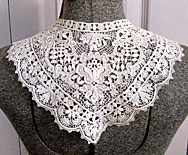
Crinoline
A crinoline skirt is a full stiff skirt made of a coarse open-weave fabric, originally cotton and horsehair, used especially to line and stiffen
garments. They were also known as hoop skirts and many were actually made with a steel framework. During the Victorian Period it was
considered fashionable for women to wear tight corsets, giving them tiny waists, and enormous full skirts with petticoats over crinoline skirts.
However the style not only lead to difficulty sitting, navigating through narrow hallways and spaces but also made it easier to trip or fall or be
blown over by a strong gust of wind. In addition the tight corsets compressed the ribcage and lungs causing difficulty breathing.
